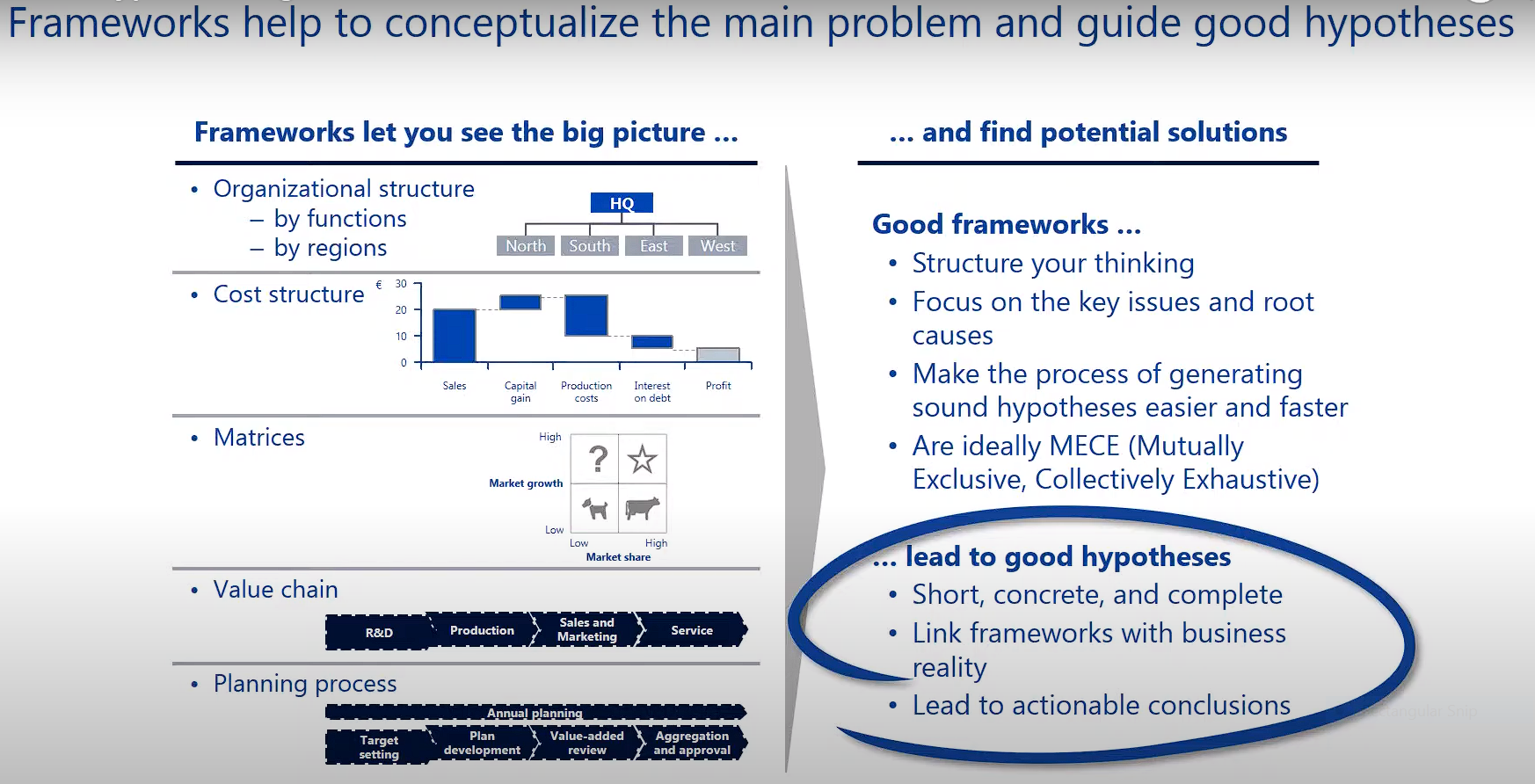2.1.4. Hypothesis Generation Frameworks#
This chapter outlines the the different frameworks that exist and how to leverage them for generating Hypothesis

Why do we need frameworks?
Frameworks help you in the following:
Approach the problem via sound structured thinking and design principles
Focus on the key issues and root causes more easily
Helps to breakdown and analyse the problem from a wider and holistic perspective
Can help communicate complex scenarios with the stakeholders more easily and effectively
There are several frameworks and strategies for generating hypotheses, including:
Deductive reasoning : This framework starts with a general theory or idea and deduces specific hypotheses from it. For example, if the general theory is that smoking causes lung cancer, a specific hypothesis could be that people who smoke are more likely to develop lung cancer than people who do not smoke.
Inductive reasoning : This framework starts with specific observations or data and generates a general theory or idea from it. For example, if you observe that people who smoke are more likely to develop lung cancer than people who do not smoke, you could generate the general theory that smoking causes lung cancer.
Abductive reasoning : This framework starts with an observation or data and generates a hypothesis to explain it. For example, if you observe that people who live in areas with high air pollution are more likely to develop respiratory problems, you could generate the hypothesis that air pollution causes respiratory problems.
Ideation sessions : This framework involves brainstorming sessions with a group of people to generate a large number of hypotheses. This approach can be useful when multiple perspectives are needed to generate hypotheses or when the research question is complex and multifaceted.
Hypothesis tree: This framework involves generating multiple hypotheses that are related to each other and organized into a hierarchy or tree structure. Each hypothesis is a branch of the tree, and evidence is gathered to support or refute each branch. This approach can help to identify the most promising hypotheses and to test multiple hypotheses simultaneously.
Fishbone diagram : Also known as an Ishikawa diagram or cause-and-effect diagram, this framework is used to identify the root causes of a problem by breaking it down into smaller categories. The diagram is structured like a fish skeleton, with the problem statement at the head of the fish and branches representing different categories of causes.
Mind map : This framework is used to organize ideas and information by creating a visual diagram that shows how different ideas are connected. The problem statement is placed in the center of the diagram, with branches representing different subtopics or ideas that are related to the problem.
Decision tree : This framework is used to help make decisions by breaking down a problem or decision into smaller, more manageable components. The decision tree is structured like a flowchart, with each branch representing a decision or outcome that leads to the next step in the process.
Pyramid principle : This framework is used to structure and organize written communication by breaking down ideas into smaller, more manageable components. The main idea or problem statement is presented at the top of the pyramid, with supporting points and details presented in descending order of importance.
Each of these frameworks is designed to help break down complex problems or information into smaller, more manageable components. They are all flexible and can be adapted to suit different types of problems or information.
No matter which framework you use, it’s important to make sure that your hypotheses are clear, specific, and testable. Hypotheses should be based on existing knowledge or observations and should be formulated in a way that can be tested through experimentation or observation.